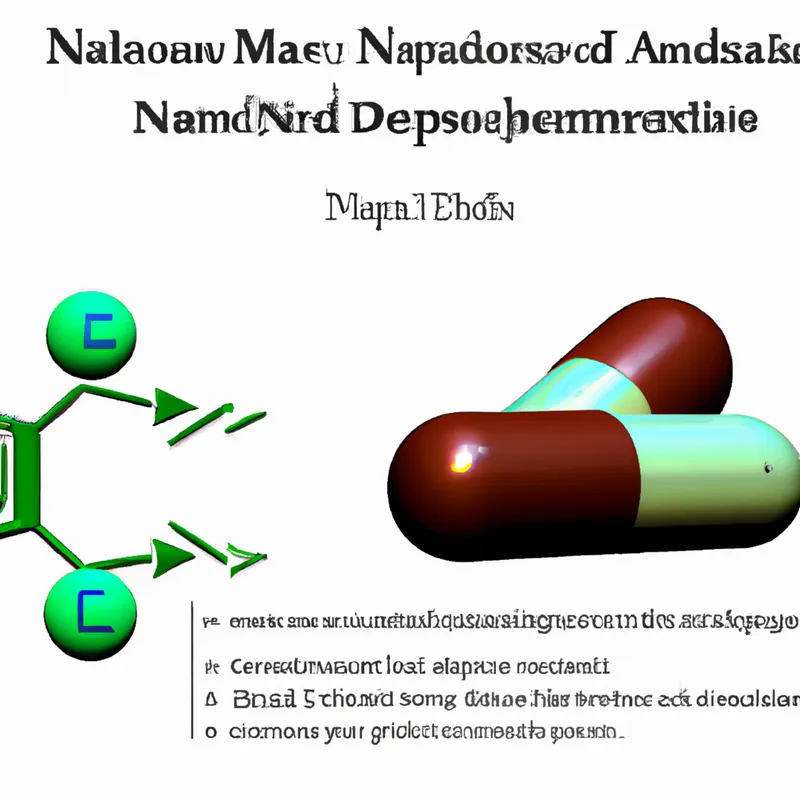Energize Your Life: Harnessing NAD+ Secrets
Understanding the Role of NAD+ in Energy Metabolism
NAD+ functions as a crucial coenzyme in cellular energy metabolism. Understanding its benefits can improve health and wellness. This blog explores NAD+, its significance, and strategies to enhance its levels.
What is NAD+?
NAD+ stands for nicotinamide adenine dinucleotide. This coenzyme exists in all living cells in two forms: NAD+ and NADH. These forms facilitate cellular processes, including redox reactions essential for energy production. NAD+ acts as an electron carrier, shuttling electrons during metabolic reactions. This process converts food into usable energy.
The Role of NAD+ in Energy Production
NAD+ plays an essential role in converting carbohydrates, fats, and proteins into energy. It participates in three major metabolic processes: glycolysis, the Krebs cycle, and oxidative phosphorylation.
1. **Glycolysis**: This process occurs in the cytoplasm. Glucose breaks down into pyruvate, producing ATP and NADH. NAD+ accepts electrons, becoming NADH, which carries the electrons to the mitochondria.
2. **The Krebs Cycle**: This cycle occurs in the mitochondria. Pyruvate converts into acetyl-CoA here. The Krebs cycle produces more NADH and FADH2, essential for the next energy production stage.
3. **Oxidative Phosphorylation**: This final stage of cellular respiration produces most ATP. NADH and FADH2 donate electrons to the electron transport chain. This donation generates a proton gradient that drives ATP synthesis through ATP synthase.
Inadequate NAD+ levels slow these processes, decreasing ATP production. This reduction causes fatigue, lower physical performance, and various metabolic issues.
How NAD+ Affects Metabolism
NAD+ also plays a crucial role in metabolic regulation. It influences signaling pathways and metabolic processes. NAD+ activates sirtuins, enzymes involved in cellular regulation, metabolism, and aging. Sirtuins enhance mitochondrial function, improve insulin sensitivity, and regulate lipid metabolism.
Maintaining a balance between NAD+ and NADH is critical for cellular homeostasis. A higher NAD+ to NADH ratio supports efficient energy metabolism and reduces metabolic disorder risks.
Tips to Boost NAD+ Levels
To increase NAD+ levels, consider these strategies:
1. **Exercise regularly**: Physical activity boosts NAD+ production.
2. **Eat a balanced diet**: Include foods rich in niacin and tryptophan.
3. **Consider supplements**: NAD+ precursors like NMN or NR can help.
4. **Prioritize sleep**: Quality rest supports metabolic health.
Conclusion
NAD+ plays a vital role in energy metabolism and overall health. Boosting its levels enhances metabolic function and reduces health risks.
Below are related products based on this post:
FAQ
What are the two forms of NAD+ and how do they function in energy metabolism?
NAD+ exists in two forms: NAD+ and NADH. These coenzymes are essential for cellular processes, particularly in redox reactions that convert food into usable energy. NAD+ acts as an electron carrier, shuttling electrons during metabolic reactions to facilitate energy production from carbohydrates, fats, and proteins.
How does NAD+ influence metabolic processes in the body?
NAD+ plays a critical role in key metabolic processes such as glycolysis, the Krebs cycle, and oxidative phosphorylation. It helps convert glucose into energy, supports the production of acetyl-CoA, and donates electrons in the electron transport chain, which generates the majority of ATP. Adequate NAD+ levels are necessary for optimal metabolic function and energy production.
What are some effective strategies to boost NAD+ levels?
To enhance NAD+ levels, individuals can engage in regular exercise, maintain a balanced diet rich in niacin and tryptophan, consider supplements like NMN or NR, and prioritize quality sleep. These strategies support metabolic health and improve overall NAD+ availability in the body.















Post Comment